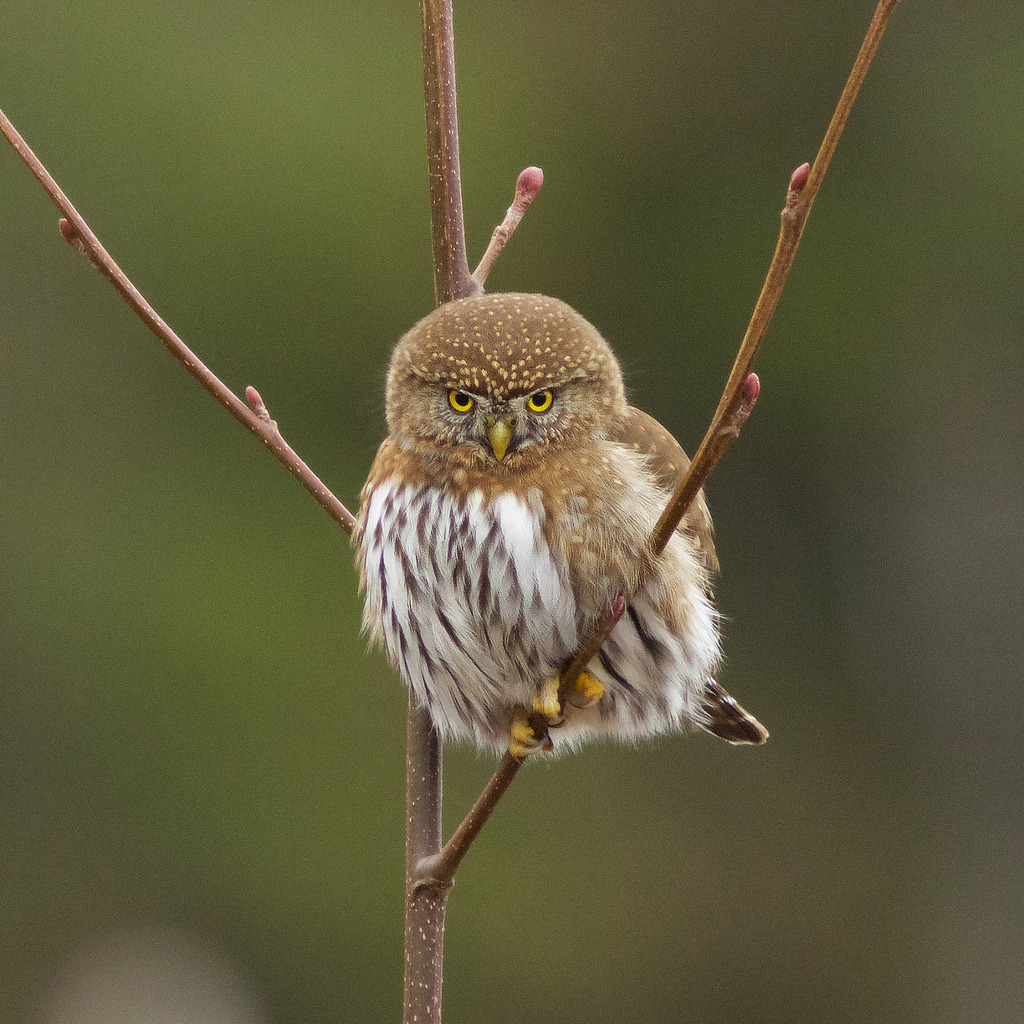The Northern Pygmy-Owl may be tiny, but it’s a ferocious hunter with a taste for songbirds. These owls are mostly dark brown and white, with long tails, smoothly rounded heads, and piercing yellow eyes. They hunt during the day by sitting quietly and surprising their prey. As a defensive measure, songbirds often gather to mob sitting owls until they fly away. Mobbing songbirds can help you find these unobtrusive owls, as can listening for their call, a high-pitched series of toots. (toots? Lol)
Northern Pygmy-Owls are widespread in the mountains of western North America, and they’re active during the day, which gives you a good chance of finding them. But they’re also small and unobtrusive as they sit and wait for prey to approach them, so you’ll need to be observant. The two best ways to find them involve your ears: you may hear them giving high, evenly spaced tooting calls. Or you may hear a commotion of chickadees and other small birds scolding and calling as they mob an owl they’ve discovered. Try to find the agitated birds and you may find the owl that they’re trying to drive away.
When they find extra food, Northern Pygmy-Owls often cache their prey in tree cavities, or by hanging the prey on thorns, as shrikes are famous for doing. (Jesus Christ how can something so cute be that monstrous lol)
Most owls have asymmetrically placed ears as well as flattened facial discs around the eyes. Both of these features are adaptations that give them better hearing. Interestingly, Northern Pygmy-Owls lack these features, and this may be an outcome of their diurnal habits and greater reliance on vision.
Northern Pygmy-Owls raise a pair of tufts on the sides of their head when threatened by a predator, such as a hawk or a cat. They also have a pair of spots on the back of the neck that look a little like eyes. Scientists think these markings may help fool attackers or mobbers into thinking the owl is watching them.
Northern Pygmy-Owls, although not much larger than House Sparrows, sometimes take prey up to three times their own size, such as Northern Bobwhite, Northern Flicker, and even chickens!
What a little shithead.

Wonderful pic!
Gets me...Wishing for a post-Reddit r/Superbowl replacement
I've got a lot of content at [email protected] that I've been posting.